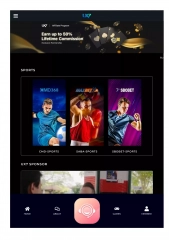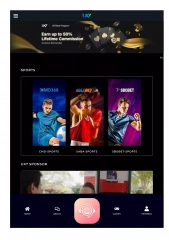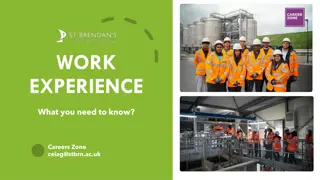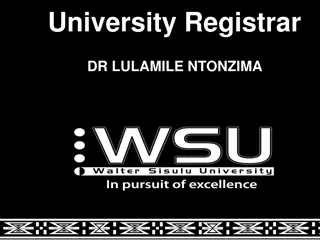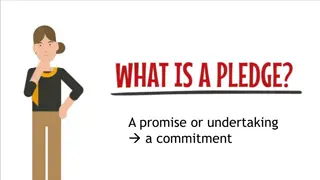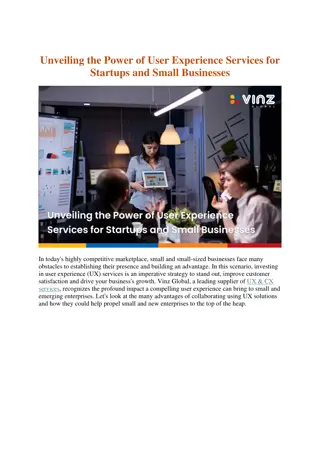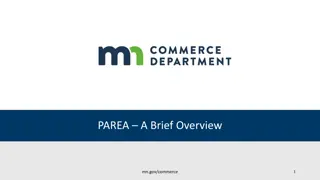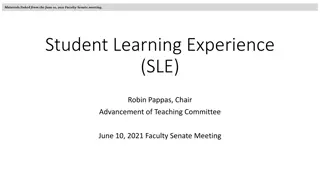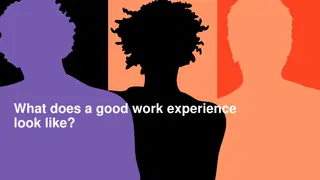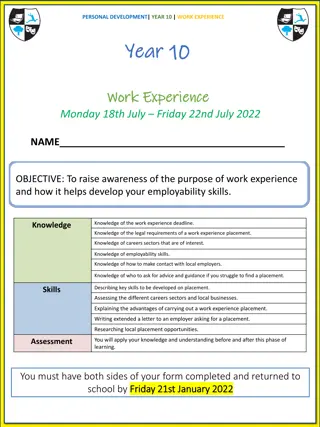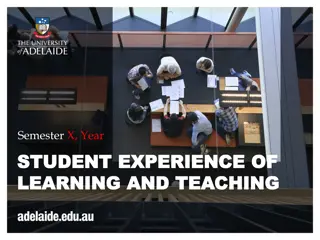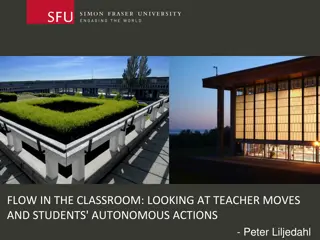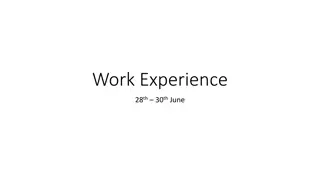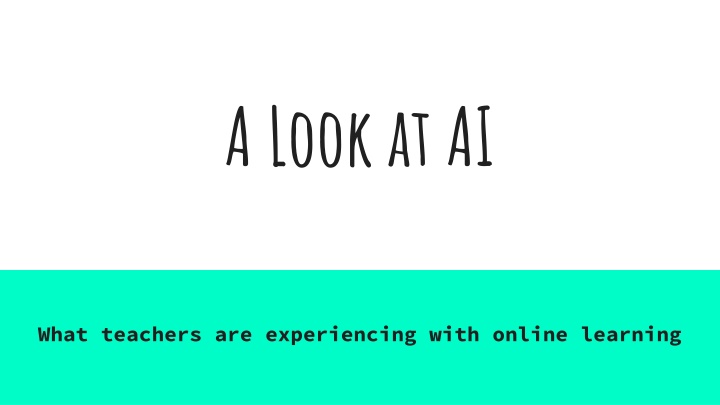
AI Tools and Plagiarism Issues in Online Learning Environments
Explore the challenges teachers face with students using AI tools in online learning, leading to increased plagiarism concerns. Discover the impact on developing skills and competencies in educational settings during the shift to fully online teaching.
Download Presentation

Please find below an Image/Link to download the presentation.
The content on the website is provided AS IS for your information and personal use only. It may not be sold, licensed, or shared on other websites without obtaining consent from the author. If you encounter any issues during the download, it is possible that the publisher has removed the file from their server.
You are allowed to download the files provided on this website for personal or commercial use, subject to the condition that they are used lawfully. All files are the property of their respective owners.
The content on the website is provided AS IS for your information and personal use only. It may not be sold, licensed, or shared on other websites without obtaining consent from the author.
E N D
Presentation Transcript
A Look at AI What teachers are experiencing with online learning
Whats the problem It seems like a normal thing to turn to some search engine and ask the question being posed and submit THAT answer as your own. I ask Google (for example) things all the time. However, the difficulty comes with what we do with the answers. If I am cooking and ask for what is a viable substitute for baking powder, and use that answer in my baking that s an entirely viable use. To submit that answer with no changes or thinking on my part to my cooking class assignment (on common kitchen ingredient substitutes) is not The point of homework is to assess whether a student has mastered the material or developed the competencies of the course. If I am taking a cooking class, where one of the competencies is to KNOW (that is, to be able to work in a kitchen and not have to stop and look up the answer) common substitutes, a rote copy and paste will not enable me to KNOW the answers. And, I have no idea whether Google (in this case) knows the right answer. At the very least, I need to verify the answer against at least one other source. So, when you copy and paste an answer from a search engine or an artificial intelligence application (e.g., Chat- GPT), you do not develop the skills or competencies nor do you actually KNOW the right answers. Moreover, the answers generated by Chat-GPT vary from quite good to mind-bogglingly wrong. They are vague, generic, and lack engaged critical thinking and writing. When I have multiple students use these apps to respond to the same question, I get extremely similar responses. That is, I can easily tell that they ve all used the same application because of the repeated errors in content, similarities in format, and overly verbose and generic language. So, do not use these applications. You may also feel that your writing needs help. I can understand that feeling, particularly if your teachers downgrade your work when it contains errors. However, I do not take off points for writing it is my expectation that you will acquire these skills while writing for my course and more specifically in English classes (English 1A and 4 or 7). Therefore, please do not use Grammarly or other such applications. Please do use the basic tools that most word processors have (spell check and basic mechanics).
A little bit of history When we moved to fully online during Pandemic, most of us were concerned about the frequency of plagiarism rising. Canvas tool scans for published material, including previous students work. It does NOT scan discussion boards. It is marginally effective for AI. Most of us embedded the checker for all work. With the introduction of multiple generative AI tools, e.g., Chat GPT, and writing tools, e.g., Grammarly, the potential for plagiarism increased substantially. I probably missed the first entries, because I wasn t expecting them. But, by spring 2023, I was noticing and the numbers increased substantially by fall 2023.
The writing cue Based on THE STORY, reflect on the culture that tells this story, and write a paragraph that answers any of the following questions--what kind of environment did they live in, what kind of way of life (hunter-gatherer, agrarian, etc), what values might this culture have, what do you think of the major characters, OR other observations that you have about the story.
What was I seeing: A typical student response The suspicious response Values: A creation story from China, such as "Pan Gu and the Creation of the World," might provide insights regarding the cultural and environmental context of those who told it. The story depicts a legendary world in which the universe was once a chaotic egg, and the god Pan Gu came to bring order by dividing yin and yang. This story illustrates the traditional Chinese belief in the duality of yin and yang, as well as the value of balance and harmony in the universe. The story's setting may be based on old Chinese natural sceneries, including references to mountains, rivers, and heavenly bodies. The agrarian way of life is frequently associated with such landscapes, implying that the civilization narrating this narrative had a strong connection to agriculture and environment. The culture's ideals may include reverence for nature, respect for cosmic order, and confidence in the power of creation and transformation. The main characters, including Pan Gu, are portrayed as powerful legendary figures who symbolize cosmic powers, reflecting the culture's spiritual beliefs and worldview. Overall, the novel provides insight into ancient China's rich mythology and cultural past, with a focus on topics such as creation, harmony, and cosmic order. The values in this story are morals and punishment. An example for morals is when the master/priest thought that the monkey had no right to kill the robber kings that were threatening them. An example of punishment is the spell Bodhisattva Kuan Yin gave to Tripitaka because the monkey was being troublesome. Characters: The monkey is a trickster, and reminds me of a bad-tempered pre-teen with a bad habit of lying. Other: I enjoyed the story, I wish it was a little longer to the end of their trip
I also saw the same paper (5 that followed this pattern) This paper delves into the animated Moana film through the traditional myth theories of symbolism and the hero's quest, aiming to determine the incorporation of classic mythic themes. Directed by Ron Clements and John Musker, Moana is a 2016 Disney animated musical following the journey of Moana, a Polynesian teenager, on a daring sea voyage to save her island and discover her true identity. Through an analysis of instances of symbolism and the hero's quest, this paper evaluates the presence of traditional mythic elements in this modern animated context. In this paper, I will explore the mythical elements present in the film "Moana" through the lenses of two specific theories: symbols and the hero's quest. The central thesis is to investigate whether "Moana" draws upon traditional/classic mythic themes and motifs. The film is a captivating narrative that intertwines Polynesian mythology with a strong female protagonist, Moana. To support this exploration, I will delve into the symbolism embedded in the narrative and analyze how Moana's character aligns with the hero's quest archetype. Symbols play a crucial role in conveying deeper meanings within the narrative. The Heart of Te Fiti stands out as a powerful symbol representing life, balance, and the interconnectedness of humanity with nature. Symbolism in Moana Symbolism plays a crucial role in mythic storytelling, providing deeper layers of meaning and cultural significance. According to Campbell (2008), symbols serve as vehicles for expressing spiritual truths and connecting individuals to the collective unconscious.
Discussion Boards (short responses, worth 3 points) Space has a deep meaning in my life, both in its sacred and mundane forms. Sacred settings provide me with a sense of calm and connectedness to something higher than myself. Whether it's a peaceful natural setting, a place of church, or a favorite corner in my house, these places offer refuge, inspiration, and a chance for spiritual reflection. In contrast, common environments such as bustling city streets or peaceful cafes impact my daily experiences and relationships, reflecting the rhythm and vitality of urban life. Each space, whether sacred or secular, has its own ambiance and meaning, which influences my emotions, ideas, and sense of belonging. Together, these locations help to shape my sense of self, These areas work together to strengthen my feeling of identity, well-being, and connection to the world. I think sacred space is very important. It is a place where I can relax, think and get away from life stress. And it is not only about religion but it is any place where someone feels comfortable.
Rampant issue in my courses: What I did Checked our policies (no plagiarism). Checked with my dean (use plagiarism policy, post in your syllabus, in Canvas). Wrote a policy statement, which is posted on my Canvas site and within the syllabus (show). Researched and purchased what is considered a reputable AI checker at my own expense (>$200 to date). [It is available as a Canvas add-on.) Raised this issue with Academic Senate and anyone I talked to Participated in the initiating conversation about AI on Campus (task force). Continue to raise the issue. Look forward to the results of the task force.
What I do Read a response. Keep an eye out for overly generic, overly verbose, impersonal, off target text. Copy and paste to Copylinks, and check. When confirmed, copy and paste base response (show). (And, someone who isn t cheating?) Hope the student redoes the work. Because we don t have a verified method for identifying AI generated work, I cannot drop or pursue a plagiarism case for these students. Instead, they sit in the class and just keep doing it. I hypothesize that these students do so to collect financial aid, but I can t prove it. I have four sections, my starting enrollment was just shy of 250 students, with between 2 and 4 assignments per week, some long, some short. I read all assignments, and check any assignment that is suspicious.
What Id like District and colleges to adopt and enforce policies that prohibit plagiarism, explicitly including the use of AI or other software tools that make a substantial contribution to a student s work. The task force and the district to identify and recognize effective checkers and provide access to checkers (e.g., embed Copyleaks within Canvas or compensate faculty for purchase). Develop and implement processes to allow faculty to DROP students who are warned, checked, and with confirmed AI use, and refer such students to be checked for financial aid fraud. Identify cutting edge, online pedagogy that both embraces AI as a valuable tool but requires students to learn to critically think, write, and read as well as acquire course knowledge and competencies.


